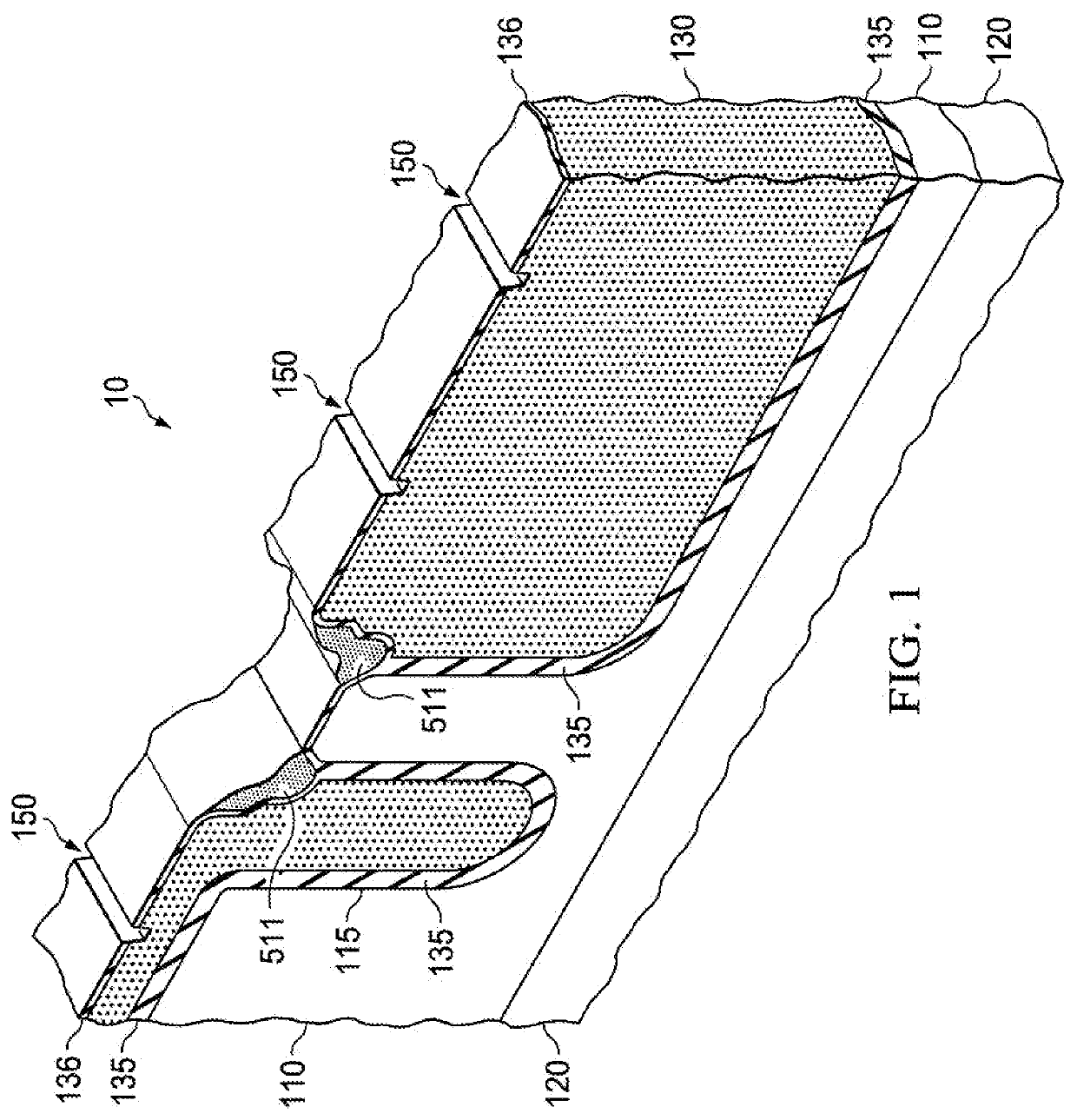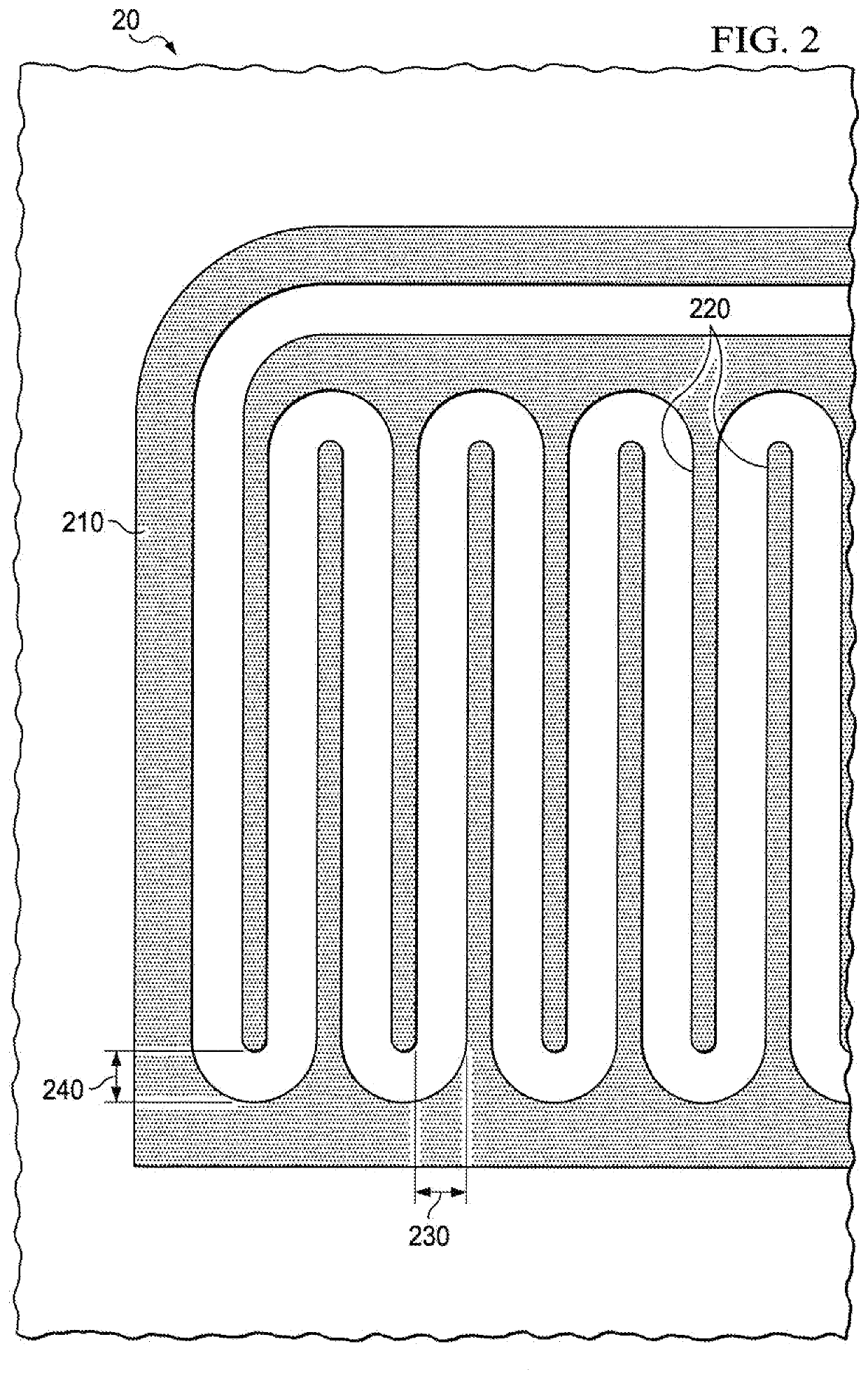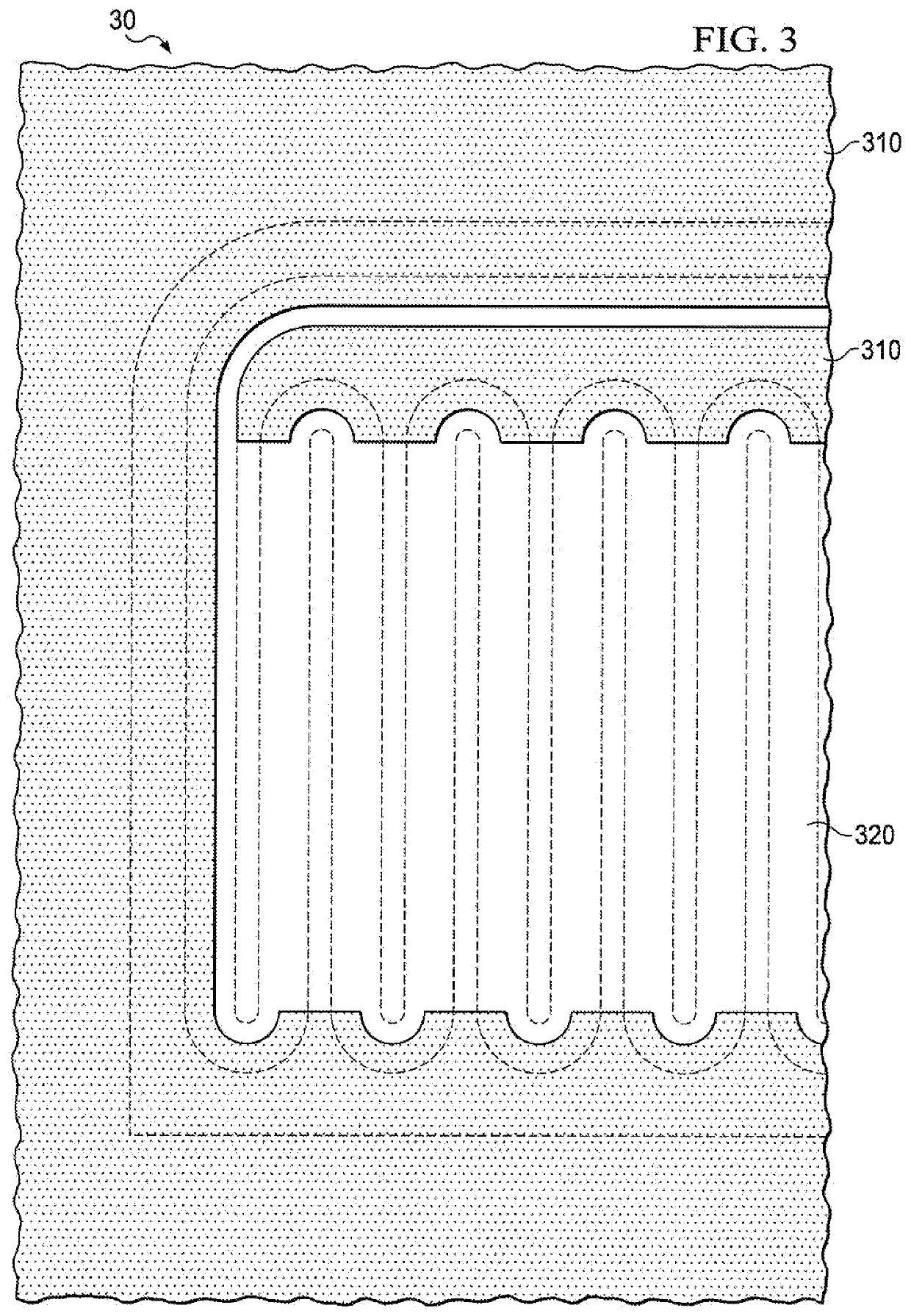Split-gate trench mosfet
a technology of split-gate trenches and mosfets, which is applied in the direction of basic electric elements, electrical equipment, semiconductor devices, etc., can solve problems such as production loss
- Summary
- Abstract
- Description
- Claims
- Application Information
AI Technical Summary
Benefits of technology
Problems solved by technology
Method used
Image
Examples
Embodiment Construction
[0069]In drawing FIGS. 1 through 8, various portions of an exemplary silicon based split gate trench MOSFET (metal oxide silicon field effect transistor) and several masks used in making the MOSFET are depicted in the drawings for the purpose of teaching a person skilled in the art to make and use the invention. The drawings are not exhaustive and the elements not to scale but are only for demonstrative purposes.
[0070]FIG. 1 depicts a slice 10 of the MOSFET chip in a perspective sectional view. The slice is within the termination region. At the bottom of drawing is the substrate 120, a silicon layer. It is usually heavily doped with a group V element such as arsenic and phosphorus for a n-type MOSFET; for a p-type MOSFET, the dopant would be of group III such as boron. Over the substrate is an epitaxial (epi) silicon layer of silicon 110. The epi layer is much more lightly doped than the substrate. The thickness of the epi layer is often dictated by the device breakdown voltage. Two...
PUM
| Property | Measurement | Unit |
|---|---|---|
| conductive | aaaaa | aaaaa |
| length | aaaaa | aaaaa |
| area | aaaaa | aaaaa |
Abstract
Description
Claims
Application Information
 Login to View More
Login to View More - R&D
- Intellectual Property
- Life Sciences
- Materials
- Tech Scout
- Unparalleled Data Quality
- Higher Quality Content
- 60% Fewer Hallucinations
Browse by: Latest US Patents, China's latest patents, Technical Efficacy Thesaurus, Application Domain, Technology Topic, Popular Technical Reports.
© 2025 PatSnap. All rights reserved.Legal|Privacy policy|Modern Slavery Act Transparency Statement|Sitemap|About US| Contact US: help@patsnap.com



